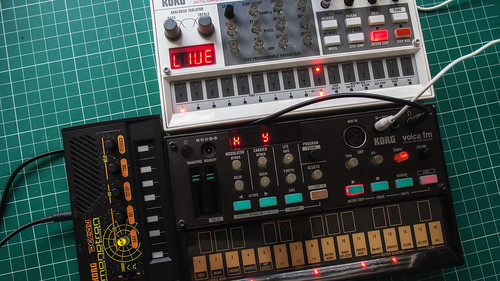
This article is part of an ongoing series on Desktop Electronic Music (DEM). The
landing page provides easy access.
This article will explain how MIDI cables are wired, starting with conventional DIN-5 sockets, then looking at TRS connectors. This will help anyone who needs to trouble-shoot wiring or solder their own cables.
DIN-5 connectors are paired as male and female ends. But there are two tricks.
First, the pin-out diagrams are sometimes presented from the point-of-view of wiring the plug. But, commonly, when using the MIDI cables, we might prefer the point-of-view of how the plug looks externally. One is a mirror image of another. (This might be obvious to all but me, since I swear I am topologically impaired.)
Second, the MIDI in and MIDI out sides of the cable are wired opposite each other, so that when they are paired, the current flows correctly. Electrically, that makes sense. But pragmatically this might be counter-intuitive. After all, when we examine a MIDI cable, it isn't labelled as to which end is which (in or out).






![punchcard [Ventriloquist 1997]](https://blogger.googleusercontent.com/img/b/R29vZ2xl/AVvXsEhTga8S3HGyz0YgiWLzugyeEab-SyAziaXwGw-zTGGWbrsYVj_Zbr3I4dSzQIEgv4-EoE6i8HVqNTZOOjToCmwoxTNiMBENY2K5MGvSvyDGIoBgNik7O-eL1Aqk94DFkTTBofT8/s1600/DEM-punchcard-%255BVentriloquist-1997%255D.jpg)